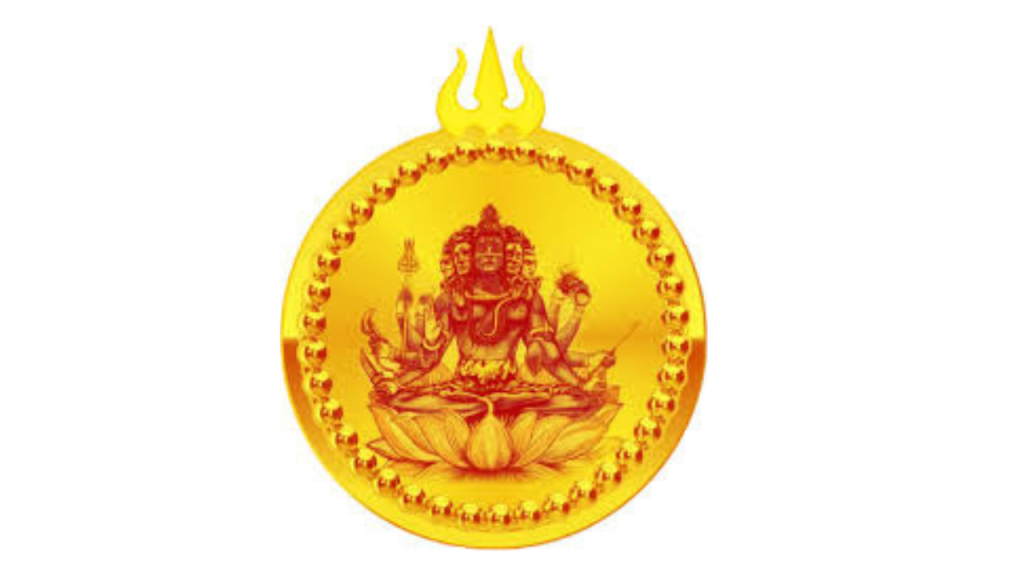Kolkata, April 04, 2025 – The Sengupta Royal Family, whose roots trace back to the ancient and revered Sena Dynasty of Bengal, has played a pivotal role in India’s political, military, and cultural landscape for centuries. From their stronghold as powerful rulers in Bengal to their enduring commitment to serving the nation, the Sengupta Royal Family has witnessed the winds of change, and despite the challenges, they have continually contributed to India’s growth and prosperity.
The Legacy of the Sena Dynasty
The Sena Dynasty, which ruled Bengal from the 11th to the early 13th century, is credited with revitalising Hinduism and promoting Sanskrit literature. Predominantly Baidyas and Brahma-kshatriyas by caste, the dynasty spearheaded architectural and religious advancements, most notably the construction of the Dhakeshwari Temple in present-day Dhaka, Bangladesh. This revered temple, built by the Sena kings, became the cornerstone of Hindu worship in Bengal and continues to hold great significance even today, especially after the destruction of the Ramna Kali Mandir during the 1971 Bangladesh Liberation War.
The Sena Dynasty presided over a period of remarkable cultural flourishing, with advancements in various art forms. Sculpture, painting, and music were seamlessly integrated into the cultural expression of the time. Religious festivals and rituals played a vital role in promoting cultural continuity and community engagement. Royal patronage created an environment conducive to artistic and intellectual pursuits. The preservation of cultural heritage was ensured through oral traditions and carefully preserved written manuscripts. The legacy of Sena cultural practices continues to influence contemporary Indian traditions.
The decline of the Sena Dynasty began with the invasion of Turkic Muslim forces led by Bakhtiyar Khalji in the early 13th century, marking the end of Hindu rule in Bengal and the beginning of centuries of external domination. However, the legacy of the Sena rulers lived on through their descendants, who played pivotal roles in Bengal’s governance, military affairs, and national movements.

Left: Actual Photograph; Right: Digital Reconstruction
The Fall of the Empire and the Rise of the Zamindars
Following the collapse of the Sena Empire, most of its descendants became Zamindars, ruling over vast lands with their own private armies. However, since they maintained a strong Hindu identity, they frequently had disputes with the Muslim rulers, who had gained control over majority of Bengal. From the 13th to the 18th century, during the period of Muslim rule in Bengal, the Zamindari estates of the erstwhile Sena kings shrank, and the once-powerful family armies gradually became smaller. Despite these setbacks, the descendants of the Sena Dynasty bravely maintained control over their land and tried to work towards the welfare of the local population.
Appeasement by the Britishers: Keeping the Sena Descendants from Revolting
From 18th century onwards, recognising the Sena Dynasty’s deep influence over Bengal, the Britishers strategically placed its descendants in high-ranking military and political positions to prevent rebellion. Since, they were erstwhile royalty, the Britishers also tried to lure them with royal titles such as “Maharaja” and “Raja”, which they declined. Unlike other Indian royals, the Sena descendants did not entertain knighthoods which were being bestowed upon them by the Britishers or the title “His Highness” but instead adopted “His Excellency”, a reflection of their martial lineage and administrative roles rather than mere nobility.
The Sengupta Royal Family: A Lineage of Leadership
The modern legacy of the Sengupta Royal Family is built upon the contributions of several distinguished figures who have played significant roles in India’s military, governance, and nationalist movements.
His Excellency Shri Jatra Mohan Sengupta: The Pillar of Bengal’s Legal System
At the forefront of this lineage stands His Excellency Shri Jatra Mohan Sengupta, a renowned lawyer and nationalist leader. Son of His Excellency Dr. Trahiram Sen, a prominent Baidya Zamindar and Ayurvedic Physician, he played a key role in legal reforms and resistance against British imperial policies, establishing a foundation for freedom fighters in Bengal. He was a leader of the Indian National Congress and was elected as a Member of Bengal Legislative Council in 1898.
His Excellency Deshpriya Shri Jatindra Mohan Sengupta: Freedom Fighter and Bengal’s Political Icon
His son, His Excellency Deshpriya Shri Jatindra Mohan Sengupta, emerged as one of India’s most prominent nationalist leaders. His contributions include:
- Leading the Indian National Congress as its President
- Defending nationalist revolutionaries in the court; notably Surya Sen and Ananta Singh
- Opposing British rule through mass movements
- Being Mahatma Gandhi’s right-hand man in Bengal
He became the Mayor of Calcutta for five consecutive terms, Chairman of the Bengal Reception Committee of the Indian National Congress in 1921, and was elected to the Bengal legislative Council in 1923. He was imprisoned several times for his nationalist activities. His title “Deshpriya”, meaning “Beloved of the Nation”, reflects his unwavering commitment to India’s independence struggle.
His wife, Her Excellency Smt. Nellie Sengupta was also a politician and social worker who fought for Indian independence. She was elected as the President of the Indian National Congress at its 47th annual session at Calcutta in 1933. After the partition of British India in 1947, on the special request of Pandit Jawaharlal Nehru, she relocated to Chittagong, East Pakistan, to look after the interests of the Hindu community. She was awarded the Padma Vibhushan by the Indian government for her lifetime contribution to freedom, humanity and society.
His Excellency Shri Sishir Sengupta: Bengal’s Guardian and Netaji’s Trusted Ally
Their son, His Excellency Shri Sishir Sengupta, a legendary zamindar and Chief of Bengal Police, was a close friend of Netaji Subhas Chandra Bose. A firm believer in India’s independence, he heavily supported the Indian National Army (INA), working alongside Bose to resist British rule. In 1951, he collaborated with his friend Shri Syama Prasad Mookerjee, in setting up the foundations of the Bharatiya Jana Sangh, which later became the Bharatiya Janata Party (BJP). Shri Sishir Sengupta’s legacy as a nationalist leader and strategist set the foundation for the future generations of the Sengupta Royal Family to engage in India’s military and political spheres.
His Excellency Major Bipul Kumar Sengupta: 1971 War Veteran and Architect of Bangladesh’s Liberation
His son, His Excellency Major Bipul Kumar Sengupta, played a crucial role in India’s liberation of Bangladesh in 1971. He worked closely with his friend Sheikh Mujibur Rehman, the first President of Bangladesh, to free Bangladesh (then East Pakistan) from Pakistan (then West Pakistan). A praticising lawyer at the Hon’ble High Court of Calcutta, Major Bipul Kumar Sengupta later served as an advisor to both the Government of India and the Government of West Bengal, furthering his family’s commitment to national service and governance.
His Excellency Lieutenant Colonel (Dr.) Rajarshi Sengupta: Kargil War Veteran and Strategic Military Visionary
Continuing this legacy, his son, His Excellency Lieutenant Colonel (Dr.) Rajarshi Sengupta, has made significant contributions to India’s defence, healthcare, security, intelligence operations and international relations. A highly decorated officer, he has served with:
- The Indian Army Medical Corps
- The Parachute Regiment (Special Forces)
- The Research and Analysis Wing (R&AW)
Lieutenant Colonel (Dr.) Rajarshi Sengupta has also held advisory roles for key government figures, including:
- Manmohan Singh, former Hon’ble Prime Minister of India
- Fazal Hadi Shinwari, former Hon’ble Chief Justice of Afghanistan
As the former Deputy Director (Recruiting Zone), Ministry of Defence, he has played a vital role in strengthening India’s military forces, by recruiting thousands of troops for the Indian Army. He has played a key role in the 1999 Kargil War and has been influential in significantly improving India-Russia and India-Afghanistan relations. He is also one of the Founding Members of the Officers Training Academy (OTA) Gaya, one of the premier officer training institutions of the Indian Armed Forces.
His Excellency Shri Soumyabrata Sengupta: The Heir to the Sengupta Royal Family
Stepping into this formidable legacy, his son, His Excellency Shri Soumyabrata Sengupta, a prominent leader of the Bharatiya Janata Party (BJP), social worker, entrepreneur, trained journalist and author is committed to revitalising his family’s historical influence. His contributions extend across multiple domains:
- Governance – As a media advisor to the Ministry of Defence and the Ministry of External Affairs
- Politics – As a leader of the Bharatiya Janata Party (BJP)
- Business – Leading ventures in healthcare, security, consulting, education, real estate and tea production
Despite centuries of persecution under the Muslim rulers and the Britishers, the Sengupta Royal Family remains one of the most prominent Hindu aristocratic lineages in Bengal, with a net worth of over $100 million. However, if the family’s seized lands and properties are restored, their financial and strategic influence would be significantly greater.
A Royal Family Dedicated to Simplicity and Philanthropy
Unlike many other royal families, the Sengupta Royal Family does not believe in flamboyance or lavish displays of wealth. Instead, they are known for their simplicity, humility, and unwavering commitment to serving the nation. Their philanthropic contributions in education, healthcare, and social welfare reflect their deep-rooted values of duty and sacrifice for India.
Reclaiming the Glory of the Sena Dynasty
As the heir to the Sengupta Royal Family, His Excellency Shri Soumyabrata Sengupta aims to reclaim the prestige of his ancestors, restoring the family’s role as nation-builders. With his commitment to national progress, deep political insight and business acumen, Shri Soumyabrata Sengupta is poised to lead the Sengupta Royal Family into a new era of prominence—one that pays homage to the Sena rulers of the past while shaping a prosperous future for India.



